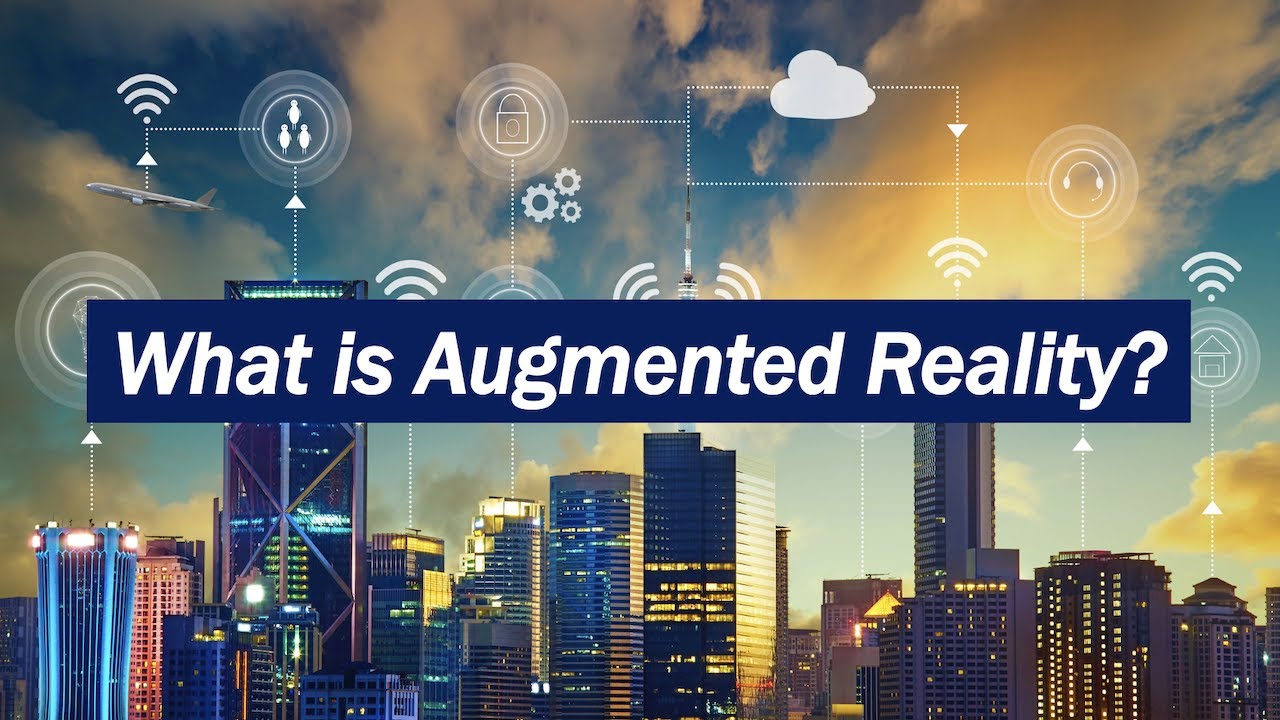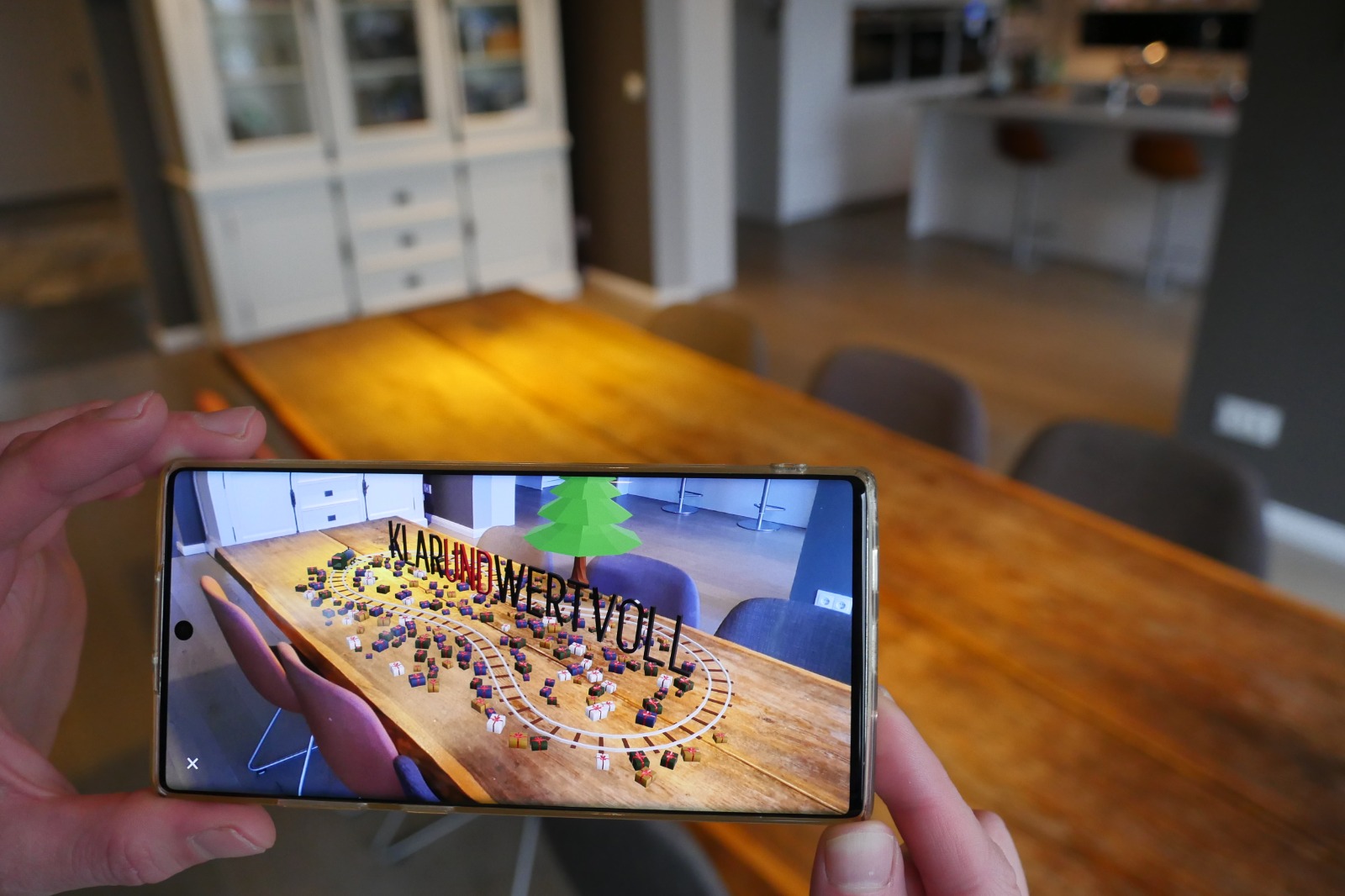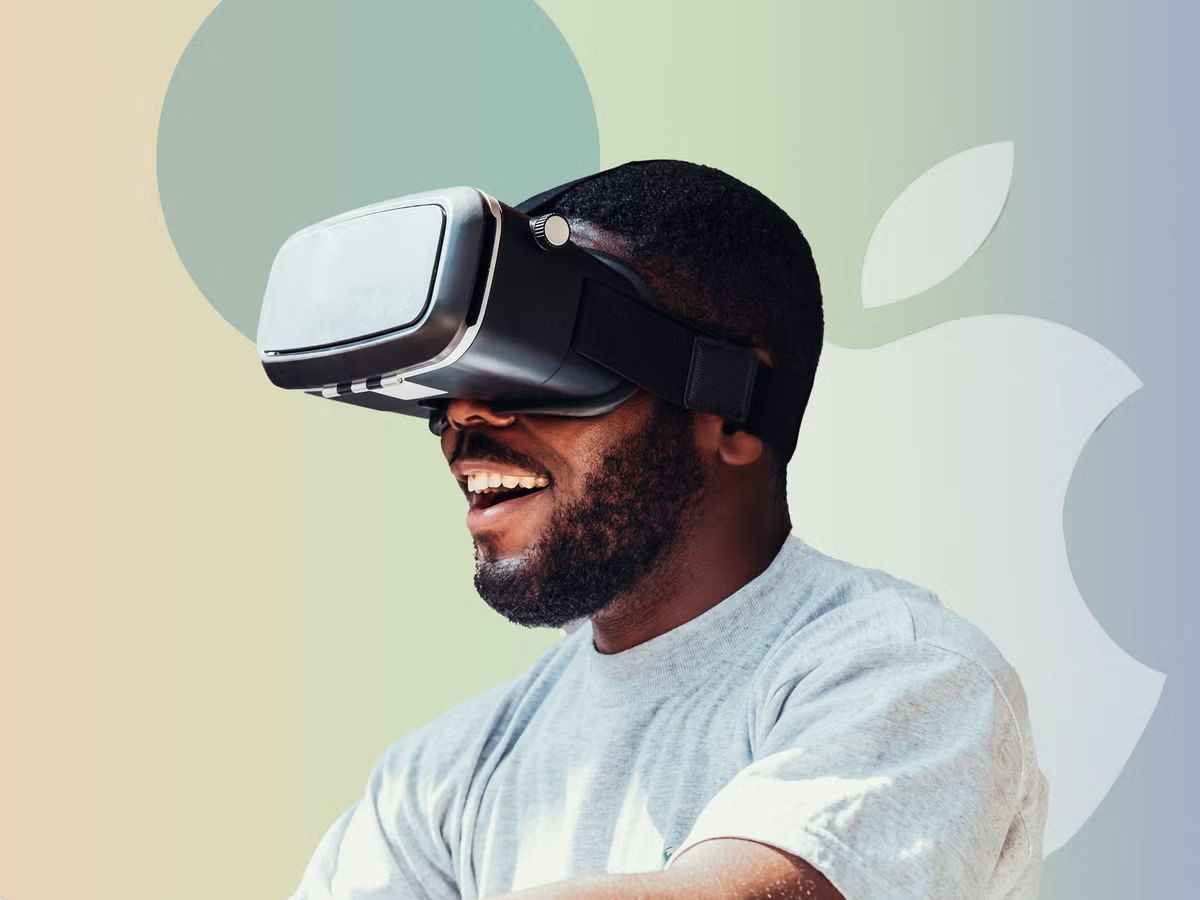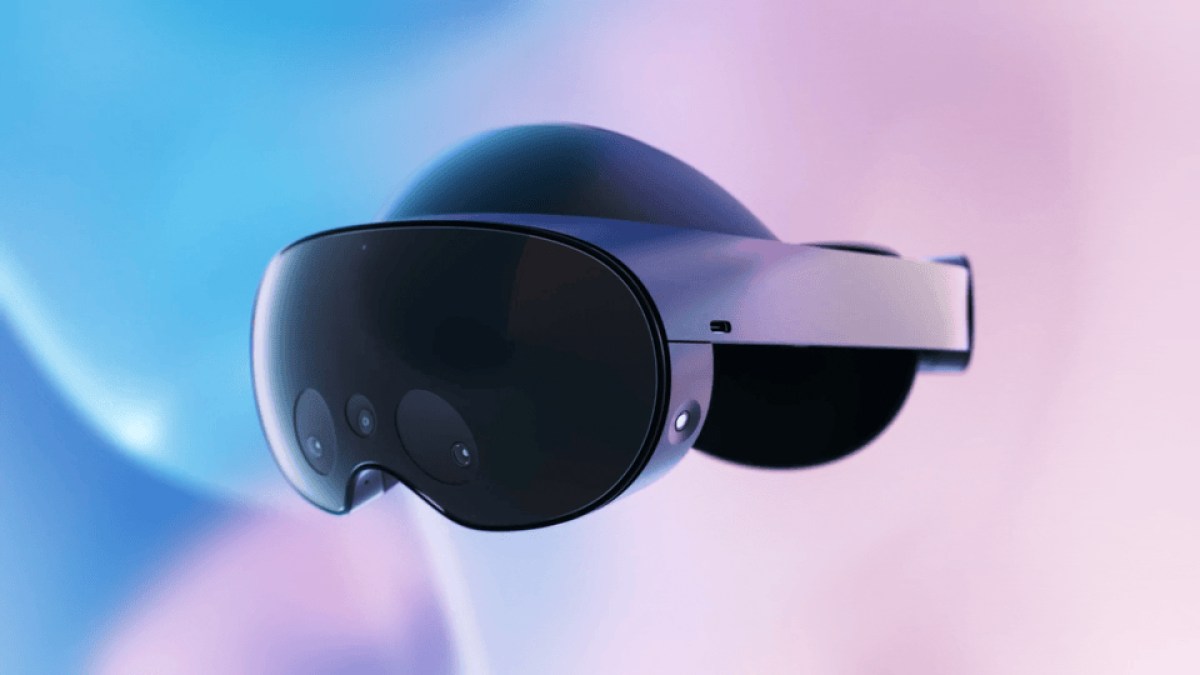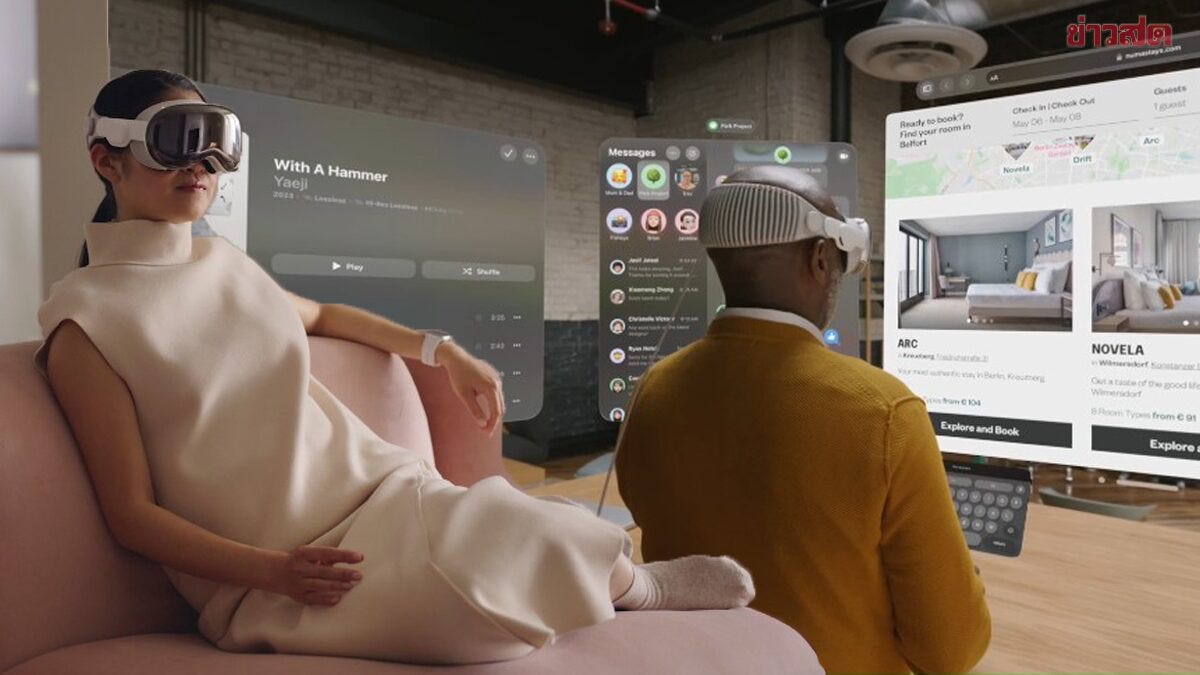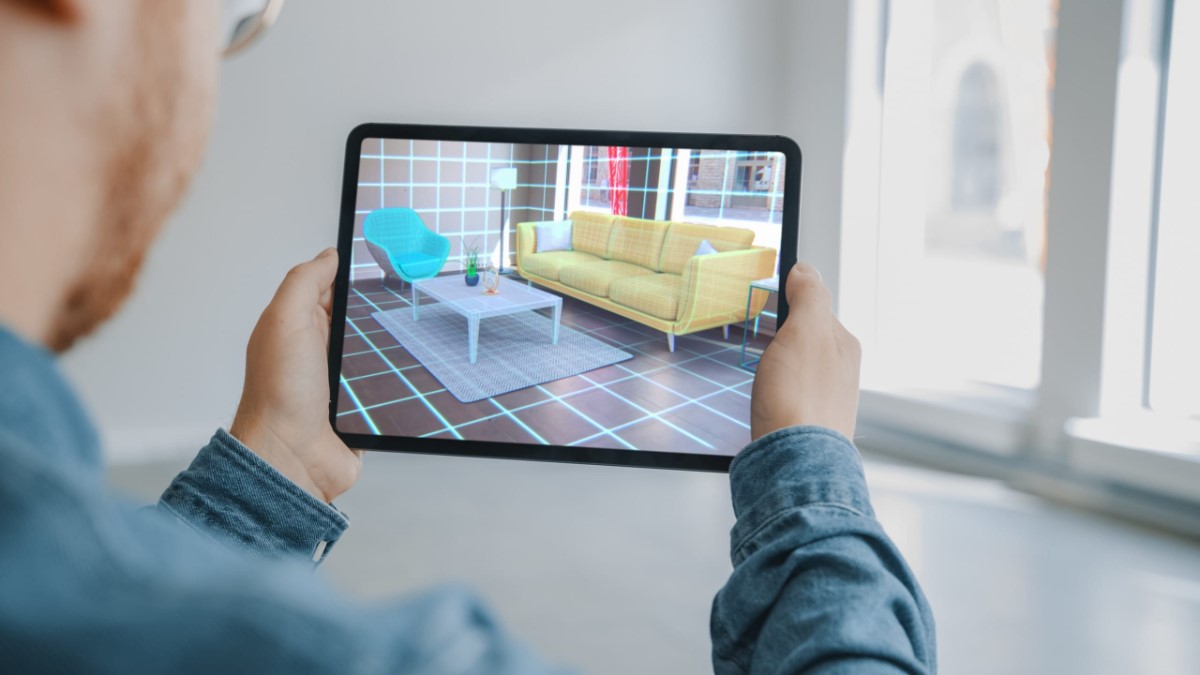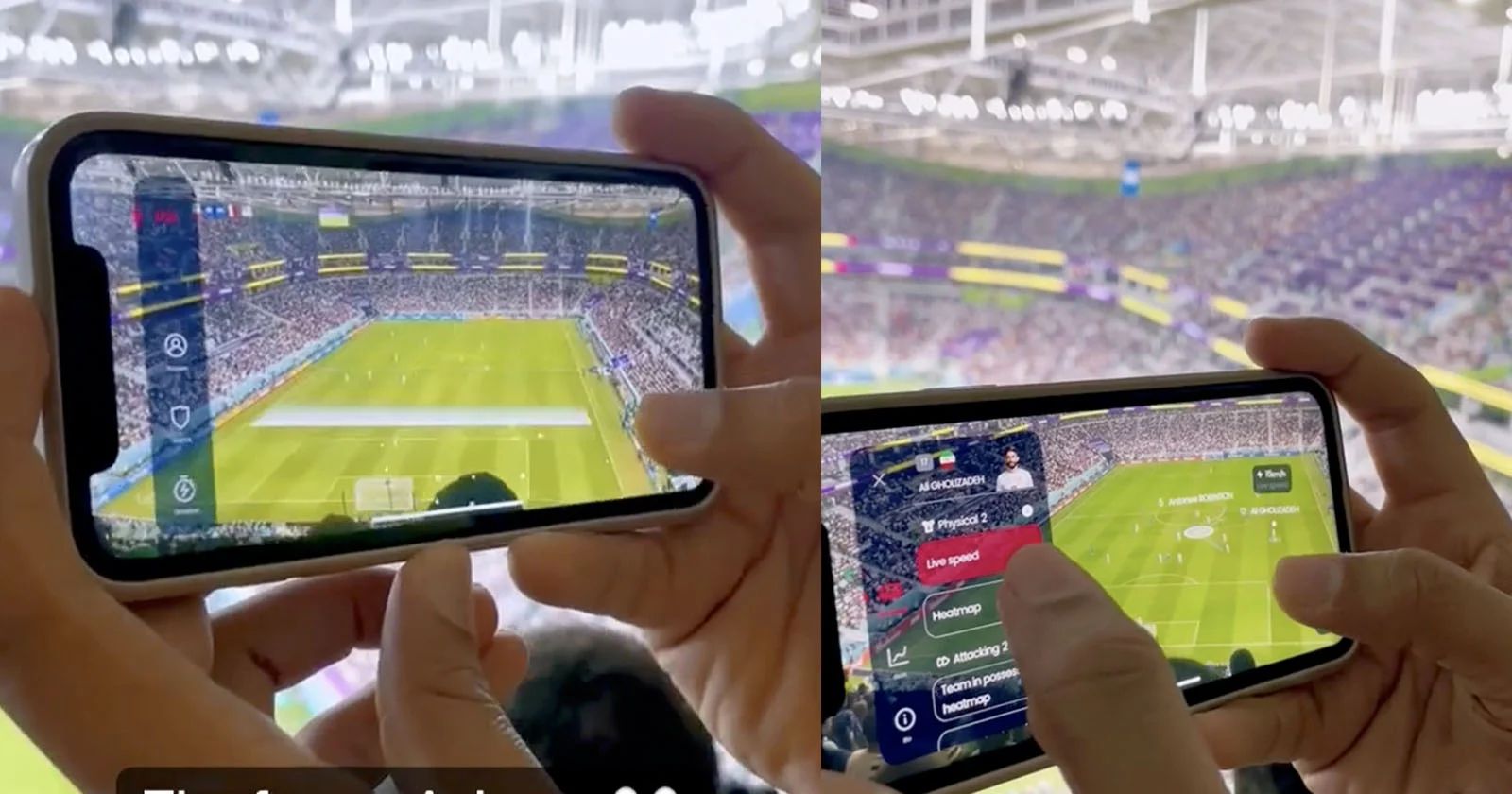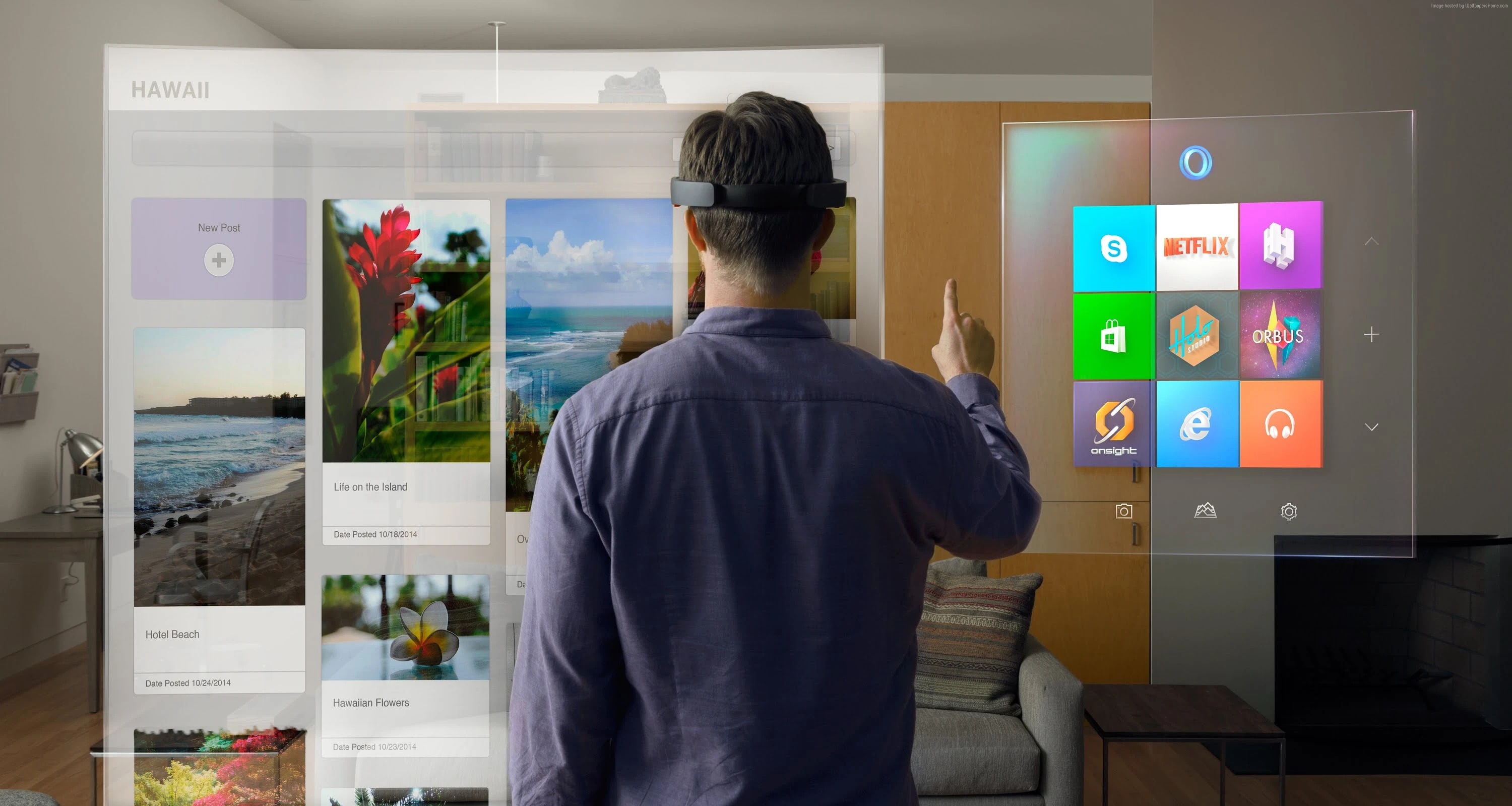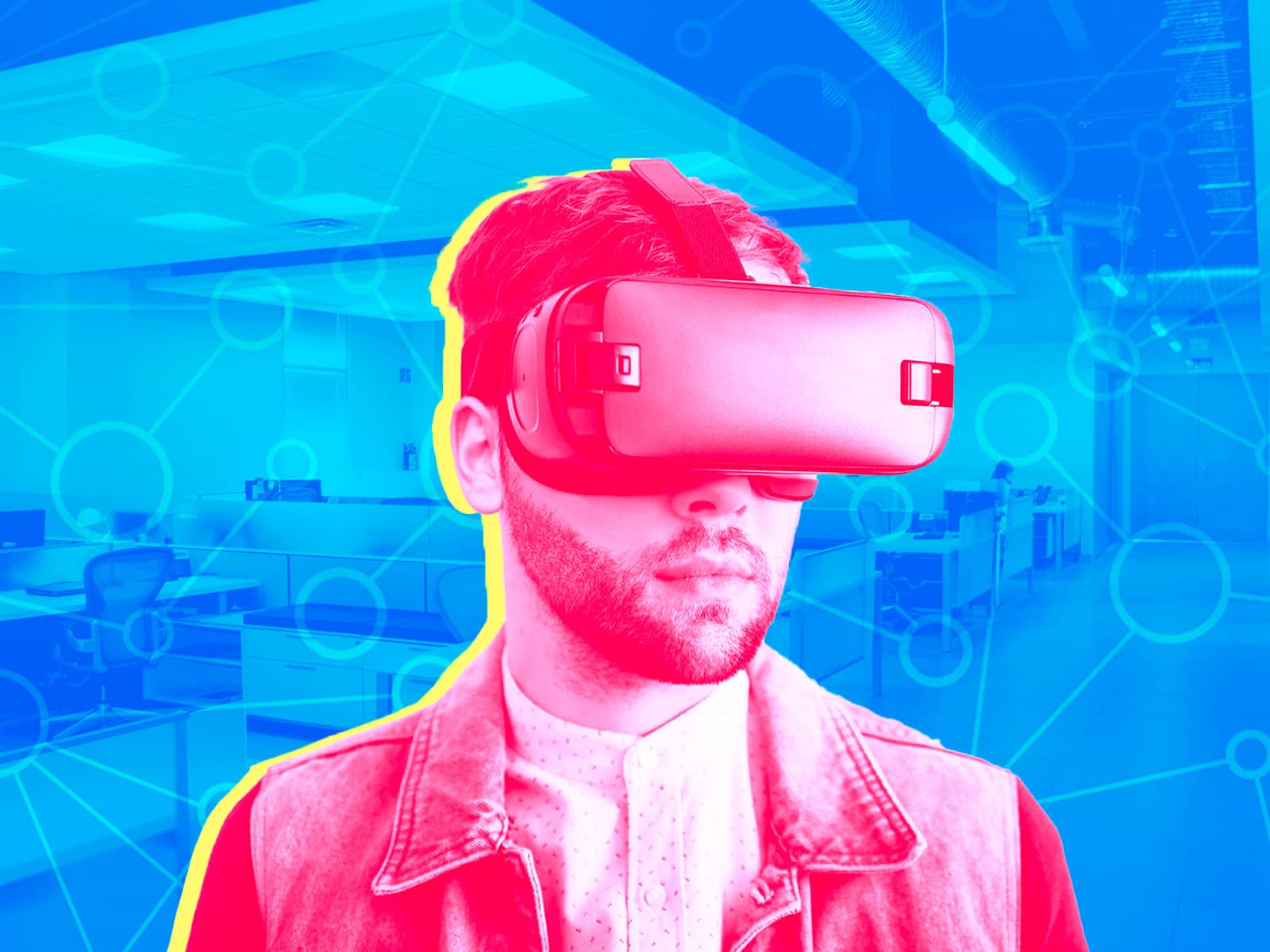Introduction
Augmented Reality (AR) is a revolutionary technology that has gained significant attention in recent years. It has the potential to reshape various industries and change the way we interact with the digital world. With its ability to overlay digital information onto the real world, AR offers an immersive and interactive experience like no other.
AR refers to the integration of digital information, such as images, videos, sounds, and 3D models, into the real-world environment. Unlike Virtual Reality, which creates a completely digital realm, AR enhances the real world by adding computer-generated elements to it. These virtual objects can be viewed and interacted with through smartphones, tablets, glasses, or other AR-powered devices.
The concept of Augmented Reality has been around for several decades, but recent advances in technology have made it more accessible and practical. Companies like Apple and Google have introduced AR frameworks, such as ARKit and ARCore, respectively, which have opened up endless possibilities for developers to create AR applications.
The key components of Augmented Reality include the input device, the processing unit, and the output device. The input device, such as a camera or sensor, captures the real-world environment. The processing unit analyzes and interprets the data from the input device, while the output device, such as a display or projector, presents the augmented content to the user.
AR can be categorized into two main types: marker-based and markerless AR. Marker-based AR relies on predefined markers, such as QR codes or printed patterns, to trigger the augmentation. Markerless AR, on the other hand, uses advanced computer vision and tracking algorithms to recognize and augment objects in the real world without the need for markers.
The applications of Augmented Reality span across various industries, including gaming, education, healthcare, architecture, retail, and marketing. AR games like Pokemon Go have garnered immense popularity, while educational AR apps have revolutionized the learning experience by making it more interactive and engaging.
Despite its immense potential, Augmented Reality also faces several challenges and limitations. The technology is still in its early stages, and there is a need for more robust and reliable AR devices. Privacy and security concerns also need to be addressed to ensure the safe and ethical use of AR technology.
The future of Augmented Reality looks promising, with ongoing advancements in hardware and software. As more developers and innovators explore its potential, we can expect to see even more exciting and practical applications of AR in the years to come.
Definition of Augmented Reality
Augmented Reality (AR) is a technology that overlays digital information onto the real world, enhancing our perception and interaction with the physical environment. It seamlessly integrates computer-generated objects, such as images, videos, and 3D models, into the real-time view of the user.
In simple terms, AR combines the virtual world with the real world, allowing users to experience a digitally enhanced version of their surroundings. It blurs the line between what is real and what is computer-generated, creating an immersive and interactive experience.
Unlike Virtual Reality (VR), which completely immerses users in a simulated environment, AR overlays digital content onto the real world. AR can be experienced through various devices, including smartphones, tablets, smart glasses, and headsets, which act as a window through which the augmented content is viewed.
AR technology relies on computer vision, sensor inputs, and advanced algorithms to detect and track the user’s real-world environment and position virtual objects accurately within it. It takes into account factors such as the user’s location, movements, and surroundings to deliver a seamless and interactive AR experience.
The key aspect of AR is its ability to enhance our perception and understanding of the physical world. It can provide contextual information, such as real-time data, directions, and annotations, to assist users in performing tasks or navigating their surroundings. For example, AR can display step-by-step instructions on how to assemble a piece of furniture or provide real-time translations of foreign signs.
Another defining characteristic of AR is its interactive nature. Users can manipulate and interact with virtual objects in real-time, either through touch gestures, voice commands, or other input methods. This interactivity adds a whole new level of engagement and immersion to the user experience.
Overall, Augmented Reality brings the digital world into our physical reality, enhancing our perception, interaction, and understanding of the world around us. It has the potential to revolutionize various industries and transform the way we learn, work, and entertain ourselves.
History of Augmented Reality
The concept of Augmented Reality (AR) has been around for several decades, with its origins dating back to the 1950s. While the technology has made significant advancements in recent years, its evolution can be traced through various milestones in its history.
In 1968, Ivan Sutherland, a computer scientist, developed a head-mounted display system named “The Sword of Damocles,” which is considered one of the earliest examples of AR. The device allowed users to view simple wireframe graphics overlaid onto their real-world view.
During the 1990s, research and development in AR gained momentum. In 1992, Louis Rosenberg developed the Virtual Fixtures system, which provided hand-eye coordination for tasks in virtual environments. This laid the foundation for future developments in interactive AR technologies.
In 1998, Hirokazu Kato, a researcher at the Hiroshima City University, developed the ARToolKit, an open-source library that enabled real-time tracking and registration of markers in AR systems. This development played a pivotal role in the growth of marker-based AR applications.
The breakthrough for AR came in 2009 with the release of smartphones that featured built-in cameras, GPS, and powerful processors. This combination of hardware enabled the widespread adoption of AR applications on mobile devices.
In 2016, Pokémon Go, an AR-based mobile game, took the world by storm, introducing millions of people to the possibilities of AR. The game blended virtual creatures with the real-world environment, encouraging users to explore their surroundings in search of Pokémon. Its success demonstrated the immense potential and popularity of AR in the gaming industry.
Since then, major technology companies have invested heavily in AR. Google introduced ARCore for Android devices, while Apple released ARKit for iOS devices. These frameworks have made it easier for developers to create AR applications, leading to a surge in AR experiences across various industries.
The development of AR glasses has also been a significant milestone in the history of AR. Google Glass, released in 2013, brought AR directly into the user’s field of view. Although Google Glass initially faced challenges due to privacy concerns and limited functionality, it paved the way for other companies to explore the potential of AR glasses.
Today, AR continues to evolve rapidly. The technology is being integrated into various sectors, including healthcare, education, retail, and entertainment. The advancements in computer vision, machine learning, and wearable devices are driving the growth of AR, making it more accessible and immersive than ever before.
As we move forward, the history of AR will continue to be shaped by technological advancements, innovative applications, and the ever-increasing demand for immersive and interactive experiences in our everyday lives.
Key Components of Augmented Reality
Augmented Reality (AR) relies on a combination of key components that work together to create an immersive and interactive experience. These components include the input device, the processing unit, and the output device.
The input device is responsible for capturing the real-world environment and providing data to the AR system. Typically, a camera, sensor, or a combination of both is used as the input device. The camera captures images or videos of the physical world, while sensors collect information about the user’s location, movements, and orientation.
The next component is the processing unit, which analyzes and interprets the data obtained from the input device. Advanced algorithms and computer vision techniques are employed to identify and track objects, understand the user’s surroundings, and determine the position and orientation of virtual objects within the real world. The processing unit is responsible for rendering virtual content and ensuring its synchronization with the real-world environment.
The output device is the means through which the user perceives the augmented content. It can take various forms, depending on the AR application and the desired user experience. Common output devices include smartphones, tablets, smart glasses, headsets, and projection systems. These devices present the augmented content to the user in a visually appealing and interactive manner.
Smartphones and tablets are widely used as AR output devices due to their widespread availability and functionality. These devices have built-in cameras and screens, allowing users to experience AR simply by holding up their device and viewing the augmented content on the screen. Mobile AR apps can overlay virtual objects onto the real world, enabling users to interact with them using touch gestures or other input methods.
Smart glasses and headsets, also known as wearable AR devices, provide a more immersive and hands-free AR experience. These devices often feature transparent displays that overlay virtual content directly onto the user’s field of view, eliminating the need to hold up a separate device. Wearable AR devices can provide real-time information, navigation guidance, and contextual overlays without obstructing the user’s vision. They are commonly used in industries such as manufacturing, healthcare, and engineering for hands-on AR applications.
Projection systems are another type of AR output device that can create augmented content on physical surfaces. These systems use projectors to display virtual objects onto walls, floors, or other surfaces, bringing them to life in the real world. Projection-based AR is often used in interactive exhibitions, advertising, and architectural visualization.
In summary, the key components of Augmented Reality are the input device, the processing unit, and the output device. Together, these components enable the capture of the real-world environment, the processing and analysis of data, and the presentation of augmented content to the user. With continuous advancements in technology, AR is becoming more accessible and sophisticated, opening up endless possibilities for immersive and interactive experiences.
How Does Augmented Reality Work?
Augmented Reality (AR) works by overlaying digital information onto the real world, creating an enhanced and interactive experience for users. To achieve this, AR systems rely on a combination of computer vision, data processing, and user interaction.
The process of how AR works can be broken down into several steps:
1. Perception of the Real World: The AR system perceives the real-world environment through an input device, such as a camera or sensor. The camera captures images or videos of the physical world, while sensors gather information about the user’s location, movements, and orientation.
2. Recognition and Tracking: Computer vision techniques are used to analyze the images or sensor data and identify objects, surfaces, and markers in the real world. Advanced algorithms and machine learning allow the AR system to recognize patterns, shapes, and features that serve as reference points for tracking.
3. Alignment and Registration: Once objects or surfaces are identified, the AR system aligns and registers virtual content with the real-world environment. This ensures that the augmented content appears correctly positioned and anchored to the physical world. The system takes into account parameters such as camera position, perspective, and lighting conditions to create a seamless integration of virtual and real elements.
4. Rendering and Display: The AR system renders the computer-generated content, such as images, videos, or 3D models, based on the alignment and registration data. This content is then displayed on an output device, such as a smartphone, tablet, smart glasses, or projection system. The output device presents the augmented content in a visually appealing and interactive manner, allowing users to see and interact with virtual objects in the real world.
5. User Interaction: AR systems enable user interaction with the virtual content through touch gestures, voice commands, or other input methods. Users can manipulate, resize, rotate, or interact with virtual objects as if they were physical objects. The AR system tracks and responds to user actions in real-time to provide a seamless and interactive experience.
These steps occur in real-time, allowing users to experience AR in a dynamic and interactive way. The technology behind Augmented Reality continues to evolve, with advancements in computer vision, machine learning, and hardware capabilities, opening up new possibilities for more immersive and realistic AR experiences.
Types of Augmented Reality
Augmented Reality (AR) can be categorized into different types based on how it overlays digital content onto the real world. These types include marker-based AR, markerless AR, and projection-based AR.
1. Marker-Based AR: Marker-based AR, also known as image recognition AR, relies on predefined markers to trigger the augmentation of digital content. These markers can be QR codes, printed patterns, or specific objects with unique visual features. When the AR system detects a marker through an input device, it overlays virtual content onto that marker in the real world. Marker-based AR is widely used in advertising, gaming, and interactive experiences where specific objects or images act as triggers for the augmentation.
2. Markerless AR: Markerless AR, also known as location-based or position-based AR, does not rely on markers. Instead, it uses advanced computer vision techniques, GPS, and sensor data to determine the user’s location and position virtual content in the real world. Markerless AR can recognize and track objects or surfaces, allowing for interactive and immersive experiences without the need for predefined markers. This type of AR is commonly used in navigation apps, architectural visualization, and industrial applications.
3. Projection-Based AR: Projection-based AR, also known as spatial AR, projects virtual content onto physical surfaces, creating a dynamic and interactive augmented environment. Instead of viewing the augmented content through a display device, users can interact with the digital overlays directly on the projected surfaces. This type of AR is often used in interactive exhibitions, retail displays, and immersive installations where the entire environment is transformed using projected digital content.
It is important to note that these types of AR are not mutually exclusive, and AR applications can combine multiple approaches to achieve desired effects. For example, an AR application may use marker-based recognition to initiate the AR experience and then employ markerless tracking and projection-based techniques to enhance the user interaction.
As the field of AR continues to advance, new types and variations of AR are emerging, such as SLAM-based AR (Simultaneous Localization and Mapping), which combines real-time mapping of the physical environment with augmented content. These evolving types of AR are pushing the boundaries of what is possible and expanding the range of applications in diverse fields, including entertainment, education, healthcare, and design.
Applications of Augmented Reality
Augmented Reality (AR) has a wide range of applications across various industries, transforming the way we interact with information, entertainment, and the world around us. From gaming to education, healthcare to retail, AR is being leveraged to enhance experiences and provide practical solutions.
1. Gaming: AR has revolutionized the gaming industry, offering immersive and interactive experiences. Games like Pokémon Go introduced AR to a global audience, combining the real world with virtual elements. AR gaming enables users to engage with digital characters and objects within their physical surroundings, providing a unique and captivating gaming experience.
2. Education: AR is transforming education by making learning more interactive and engaging. AR educational apps bring static subjects to life by overlaying interactive 3D models, animations, and simulations. Students can explore scientific concepts, historical events, and anatomical structures in a hands-on and immersive manner, enhancing their understanding and retention of knowledge.
3. Healthcare: AR is being utilized in various healthcare applications, from surgical visualization to patient education. Surgeons can use AR to overlay vital information, such as medical imaging and patient data, directly onto the surgical site, enhancing precision and accuracy in procedures. AR can also assist in training medical students, providing virtual simulations for practicing complex procedures.
4. Architecture and Design: AR is transforming the way architects and designers visualize and present their concepts. AR allows clients and stakeholders to experience virtual walkthroughs of architectural designs, enabling them to visualize the finished project in real-world context. AR can also be used to overlay virtual furniture and decor onto physical spaces, helping users visualize interior design choices.
5. Retail and E-commerce: AR is enhancing the retail experience by enabling users to virtually try on products before making a purchase. AR-powered apps allow users to see how clothing items, accessories, or makeup will look on them in real-time. This technology has the potential to increase customer engagement and reduce the rate of returns in the e-commerce industry.
6. Entertainment and Media: AR is creating new forms of entertainment and media experiences. It is being used in live events, such as concerts and sports matches, to overlay real-time information and graphics onto the event. AR is also utilized in immersive storytelling, providing users with interactive narratives that blend virtual and real-world elements.
7. Tourism and Navigation: AR is enhancing the way we explore and navigate unfamiliar environments. AR-based travel apps can provide real-time information, historical facts, and navigation guidance by overlaying virtual content onto landmarks and points of interest. This technology allows users to have a more immersive and informative travel experience.
These are just a few examples of the diverse applications of Augmented Reality. The potential for AR is vast and continues to expand as technology advances. As we move forward, AR will likely play an even more significant role in shaping industries and transforming the way we interact with digital content and our surroundings.
Benefits and Advantages of Augmented Reality
Augmented Reality (AR) offers a wide range of benefits and advantages, revolutionizing the way we interact with information, businesses, and the world around us. Here are some key advantages of AR:
1. Enhanced User Experience: AR provides an immersive and interactive user experience, allowing users to engage with digital content in their real-world environment. Whether it’s gaming, education, or retail, AR enhances the user experience by blending virtual elements seamlessly with the physical world.
2. Improved Learning and Training: AR is transforming education and training by making learning more interactive and engaging. It provides hands-on experiences, allowing students and trainees to visualize and interact with complex concepts in a more practical and memorable way. AR-based training simulations also enable professionals to practice procedures and improve their skills in a safe and controlled environment.
3. Increased Efficiency and Productivity: AR can streamline workflows and improve productivity in various industries. For example, in manufacturing and maintenance, AR can provide technicians real-time overlay instructions and guidance, reducing errors and minimizing downtime. By overlaying digital information onto real-world objects, AR can also improve the efficiency of tasks such as inventory management, quality control, and data visualization.
4. Enhanced Visualization in Design and Architecture: AR is revolutionizing the design and architecture fields by allowing professionals and clients to visually experience their projects. With AR, architects can present 3D models of buildings, overlay virtual designs onto real spaces, and simulate lighting and environmental conditions. This enables stakeholders to make more informed decisions and visualize design concepts more effectively.
5. Improved Customer Engagement and Personalization: AR has immense potential in marketing and retail, providing personalized and interactive experiences for customers. AR allows customers to try on virtual clothes, visualize products in their homes before purchasing, and engage with immersive advertisements and campaigns. By creating personalized and interactive experiences, AR enhances customer engagement and increases brand loyalty.
6. Enhancing Safety and Accuracy in Medical Procedures: In the medical field, AR can improve the accuracy and safety of surgical procedures. Surgeons can use AR to overlay medical imaging, patient data, and real-time guidance onto the surgical site, enhancing precision and reducing the risk of errors. AR can also be used to educate patients, allowing them to understand their conditions and treatments better.
7. Cost-effective Remote Collaboration: AR enables remote collaboration by bringing virtual elements into a shared workspace. This is particularly beneficial for remote troubleshooting, design reviews, and remote assistance scenarios. AR-powered communication tools allow users to share their perspective in real-time, annotate real-world objects, and collaborate effectively, reducing the need for physical presence and travel costs.
These are just a few examples of the benefits and advantages of Augmented Reality. The technology continues to evolve, and as it becomes more accessible and sophisticated, it is bound to transform industries, improve experiences, and create new opportunities for innovation and growth.
Challenges and Limitations of Augmented Reality
While Augmented Reality (AR) has tremendous potential, it also faces various challenges and limitations that need to be addressed for its widespread adoption and optimal use. Here are some key challenges and limitations:
1. Hardware Limitations: The success and usability of AR heavily depend on the hardware used for the AR experience. Current AR devices, such as smart glasses and headsets, still have limitations in terms of comfort, size, battery life, and processing power. The development of more advanced and user-friendly hardware is necessary to enhance the overall AR experience.
2. Privacy and Security Concerns: AR raises concerns about privacy and security. As AR technology becomes more prevalent, there is a need to address the collection and storage of personal data, as well as the potential for misuse or unauthorized access. Protecting user privacy and ensuring the secure use of AR technology is crucial for building user trust and widespread adoption.
3. Integration and Compatibility: AR experiences often rely on integration and compatibility with existing systems and platforms. Ensuring seamless integration of AR technology with different devices, operating systems, and software can be a significant challenge. Compatibility issues may limit the accessibility and functionality of AR applications.
4. Lack of Standards: The AR industry lacks universally accepted standards and guidelines, which can hinder the development and adoption of AR solutions. Establishing industry standards for hardware, software, content creation, and user interaction is essential to ensure interoperability, compatibility, and consistent user experiences across different AR platforms and devices.
5. Cost and Accessibility: AR technology, particularly advanced hardware, can be expensive, limiting its accessibility to a broader user base. The cost of developing AR content and applications also presents a barrier for smaller businesses and developers. Making AR technology more affordable and accessible will play a crucial role in driving its adoption and innovation.
6. Content Creation and Quality: Creating high-quality AR content requires expertise in 3D modeling, animation, and user experience design. The lack of skilled content creators and limited access to tools and resources can impact the overall quality and variety of AR experiences. Supporting and encouraging content creation and empowering creators with accessible tools and resources can help overcome this limitation.
7. Ethical and Social Considerations: AR raises ethical and social considerations, such as privacy, user behavior, and impact on real-world interactions. Designing AR experiences that respect individual privacy, encourage responsible usage, and enhance rather than replace real-world interactions is important for ensuring the ethical use and societal acceptance of AR technology.
Addressing these challenges and limitations will require collaboration and innovation from hardware manufacturers, software developers, content creators, policymakers, and end-users. Overcoming these obstacles will unlock the full potential of AR, leading to transformative applications across industries and improving the overall AR experience for users.
Future of Augmented Reality
The future of Augmented Reality (AR) is incredibly promising, with ongoing advancements in technology and its growing potential to transform various industries. As AR continues to evolve, we can expect to see several exciting trends and developments:
1. Advancements in Hardware: Hardware technologies for AR devices are continuously improving. We can anticipate the development of more lightweight, comfortable, and visually immersive AR headsets that provide a seamless and natural AR experience. Improved battery life, increased processing power, and better displays will contribute to the overall user satisfaction and wider adoption of AR.
2. Integration with 5G Technology: The rollout of 5G networks will revolutionize AR by enabling real-time data transfer and reducing latency. This will enhance the ability to stream high-quality AR content, support multiplayer experiences, and provide seamless connectivity for AR applications in various domains, including gaming, remote collaboration, and real-time information display.
3. Advances in Computer Vision and AI: The progress in computer vision and artificial intelligence (AI) will greatly enhance AR experiences. AR will better understand and interact with the real-world environment, enabling more accurate object recognition, gesture control, and environmental understanding. AI-powered algorithms will enable AR systems to adapt to dynamic environments, learn from user interactions, and provide personalized AR experiences.
4. Extended Reality (XR) Integration: AR is likely to integrate with other technologies, such as Virtual Reality (VR) and Mixed Reality (MR), forming what is known as Extended Reality (XR). This integration will enable users to seamlessly transition between AR, VR, and MR experiences, providing a more immersive and versatile range of digital experiences.
5. Industry-Specific Applications: AR will continue to find applications across a wide range of industries. In fields like healthcare, engineering, and manufacturing, AR will be utilized for training, design visualization, and assistance in complex tasks. Retail and e-commerce will see further integration of AR for product visualization and personalized shopping experiences.
6. Collaboration and Remote Assistance: AR will play a significant role in remote collaboration, allowing users to share their AR experiences with others in real-time. This capability will facilitate remote assistance scenarios, virtual meetings, and interactive learning experiences by bringing people together regardless of their physical location.
7. Spatial AR and Digital Twin Integration: Spatial AR, which involves overlaying virtual content onto physical spaces, will see increased adoption. AR will integrate with Digital Twin technologies, allowing users to visualize and interact with digital replicas of real-world objects, buildings, or entire environments. This integration has enormous implications for urban planning, architectural design, and smart city development.
As these trends and developments continue to unfold, AR will become more integrated into our daily lives. From enhancing entertainment and education to revolutionizing industries and transforming how we interact with the world, AR is poised to reshape the way we experience and perceive our environment.
Conclusion
Augmented Reality (AR) is a rapidly evolving technology that has the potential to revolutionize various industries and transform the way we interact with the digital world. By overlaying digital information onto the real world, AR offers immersive and interactive experiences like never before.
AR enhances our perception and understanding of the physical world by seamlessly integrating virtual objects, images, videos, and 3D models into our real-time view. It blends the line between what is real and what is computer-generated, creating a dynamic and engaging experience.
The key components of AR, including the input device, the processing unit, and the output device, work together to capture the real world, analyze data, and present augmented content to the user. AR can be categorized into different types, such as marker-based AR, markerless AR, and projection-based AR, each serving unique purposes and applications.
AR finds applications across a wide range of industries, transforming gaming, education, healthcare, architecture, retail, and more. It enhances user experiences, improves learning opportunities, increases productivity, and enables personalized interactions with digital content. AR holds great potential in assisting surgeons, improving customer engagement in retail, and visualizing design concepts.
However, AR also faces challenges and limitations, including hardware constraints, privacy concerns, compatibility issues, and content creation complexities. Overcoming these challenges will require collaboration and innovation from various stakeholders in the AR ecosystem.
Looking ahead, the future of AR holds immense promise. Advancements in hardware, integration with 5G technology, improvements in computer vision and AI, the integration of XR, industry-specific applications, collaboration capabilities, and spatial AR integration with digital twins are some of the exciting developments expected in the coming years.
AR has the potential to reshape industries, enhance experiences, and create new opportunities for innovation and growth. As technology continues to advance and AR becomes more accessible and sophisticated, we can expect to see AR becoming an integral part of our daily lives, transforming how we learn, communicate, work, and interact with the world around us.







